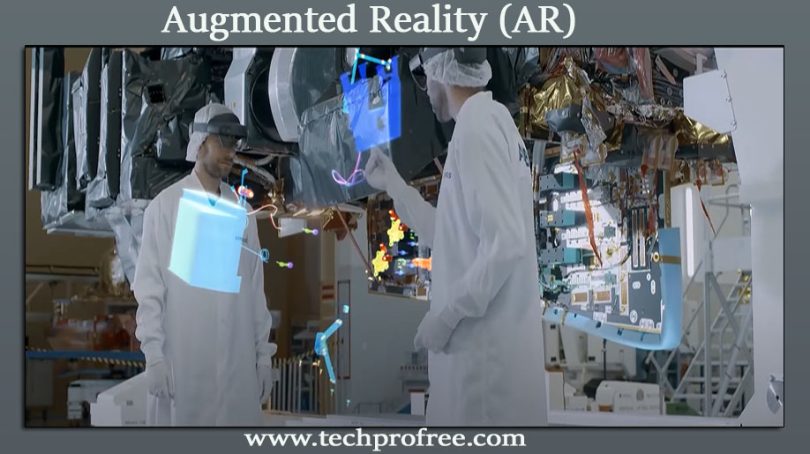In our rapidly advancing technological era, augmented reality has emerged as an integral part of our daily lives. Augmented reality (AR) allows you to seamlessly merge the physical and digital realms, enabling superior employee guidance and training, faster problem-solving, optimized efficiencies, improved productivity and collaboration, and enhanced preparedness for the future.
Exploring the Power of Augmented Reality (AR):
Augmented reality represents an innovative and evolving technology that enables users to experience a world enriched with digital content, such as visual images, graphics, and informational data. The term “augmented” originates from a Latin word meaning “to add.” Essentially, AR enhances the real-world experience by incorporating additional elements into the existing environment.
Definition of Augmented Reality:
Augmented reality (AR) is a technology that enhances and engages with the actual world by incorporating digital visual components, sounds and other sensory inputs via holographic techniques.
It consists of three fundamental elements: the integration of physical and digital realms, immediate interactions, and accurate 3D recognition of virtual and real objects.
Through the integration of digital elements onto real-life working environments, augmented reality offers an enhanced method for creating, organizing, and presenting easily understandable instructions. When businesses comprehend the essence of AR and effectively leverage its potential, remote work and efficient collaboration become viable for everyone involved.
Navigating the Digital Realities: Understanding AR, VR, MR and XR for Business Applications.
With the proliferation of various types of virtual realities, keeping up with their subtle distinctions can be challenging.
The following are the classifications of digital realities…
Augmented reality (AR) – is a technology aimed at enhancing real-world experiences by incorporating digital elements, although its interactive capabilities are somewhat restricted.
Virtual reality (VR) – on the other hand, offers captivating encounters that detach users from the physical realm. This is typically achieved through specialized headsets and headphones.
Mixed reality (MR) – merges aspects of both AR and VR, enabling digital objects to interact with the real environment. This allows businesses to anchor elements within a genuine setting, enhancing the overall experience.
Extended reality (XR) – is an umbrella term that encompasses all technologies designed to enhance our senses, including the aforementioned three types: AR, VR, and MR.
As these technologies blur the boundaries between reality, it is crucial to determine the most suitable application for your business.
Understanding How AR Works and Its Suitability for Various Applications
Augmented reality facilitates an immersive experience for its users. While glasses and camera lenses are the most common forms of AR, the market is witnessing a growing interest in diverse lenses and hardware.
The components that makeup augmented reality (AR) can be categorized into five main aspects.
- Artificial intelligence (AI): AI plays a crucial role in AR solutions by enabling users to perform actions through voice commands. Additionally, AI aids in processing the necessary information for your AR application to function effectively.
- AR software: These encompass the various tools and applications that grant access to AR functionality. It is worth noting that certain businesses opt to develop their own proprietary AR software.
- Processing power: Sufficient processing power is essential for AR technology to operate smoothly. Typically, this is achieved by utilizing the internal operating system of your device.
- Lenses: To view AR content or images, a lens or image platform is required. The realism and clarity of the displayed images are directly influenced by the quality of the screen.
- Sensors: AR systems heavily rely on sensors to gather data about their surroundings, allowing for the alignment of the real and digital worlds. When your camera captures information, it is transmitted to the software for further processing.
Conclusion:
Augmented reality is an innovative technology that carries significant potential for businesses operating in a wide range of industries. By seamlessly blending the physical and digital realms, AR opens up new possibilities for enhanced employee guidance, training, problem-solving, collaboration, and productivity. As businesses embrace the power of augmented reality, they can harness its capabilities to drive efficiencies, optimize processes and prepare for the future. Understanding how AR works and its suitability for different applications is crucial for organizations to leverage its benefits effectively. By embracing this evolving technology, businesses can stay at the forefront of innovation and create immersive experiences that propel them toward success in our increasingly digital world.




Leave a Comment